Technology
Introduction
In the early modern period, some of the world’s most valuable manufactured goods were produced in the Indian Ocean region. Indian cotton textiles were the most famous amongst these. The Indian cotton industry used unique production techniques that produced cloth of globally unmatched quality.
Palempore
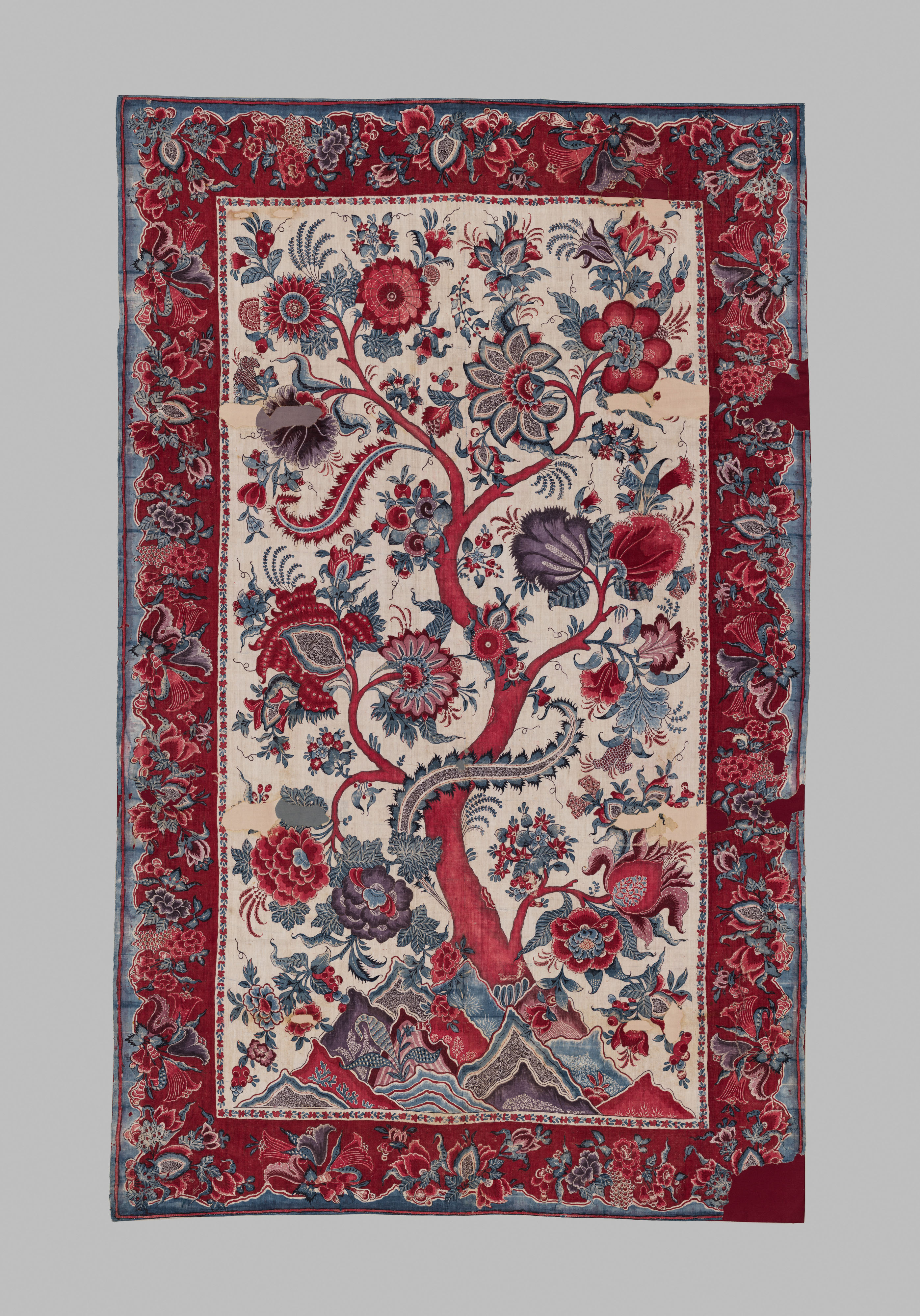
Palampore, cotton, Coromandel Coast, ca. 1700-1725. Metropolitan Museum New York,
https://www.metmuseum.org/art/collection/search/75909
This eighteenth-century Palempore is an example of such a textile. The patterns, colours, and detailed depictions, in this case of a serpentine tree, flowers, and rocks, made this a popular decorative cloth to drape over a bed or table, or hang on a wall. This cloth was probably produced for European or Indo-European consumers is Sri Lanka or Java.
Cotton Textile Production
The production of fine cotton textiles was a long process. It required specific tools, and above all advanced skills that took many years to master. Indian artisan families passed these techniques on from generation to generation. The following images produced by Indian artists in the so called ‘Company School’ style show some of the steps in the production process.
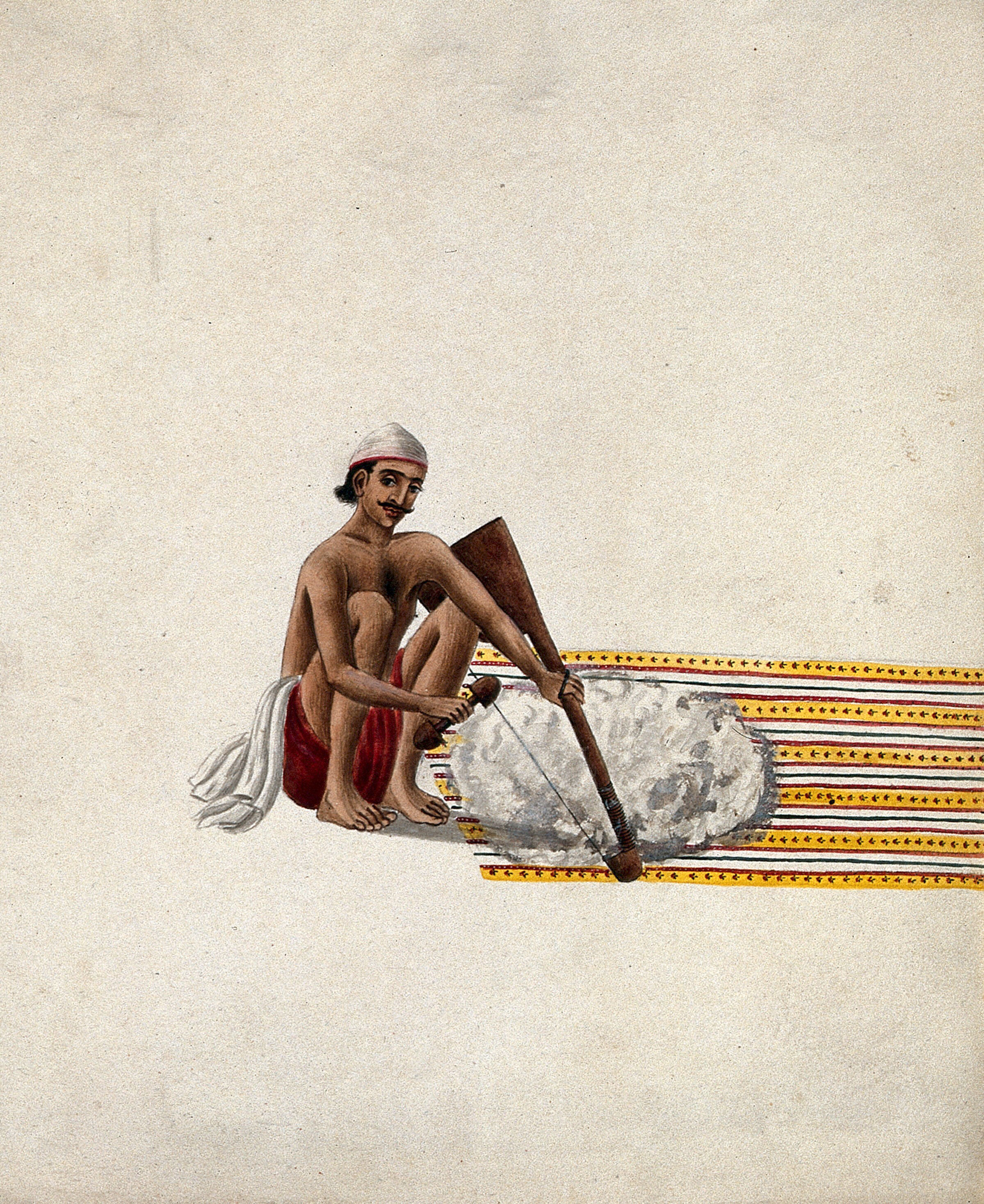
A man carding cotton, Gouache painting, unknown Indian artist, ca. 1800-1899, Wellcome Collection, public domain mark, https://wellcomecollection.org/works/k39m4hwm
After harvesting and cleaning the raw cotton, the first step is to card the cotton. By carding the fibres are separated and then assembled into a loose strand. Today this is most commonly done by machine, but on this painting a man is doing it manually using a kaman (bow). It loosens the texture of the fibre by vibrating the string.
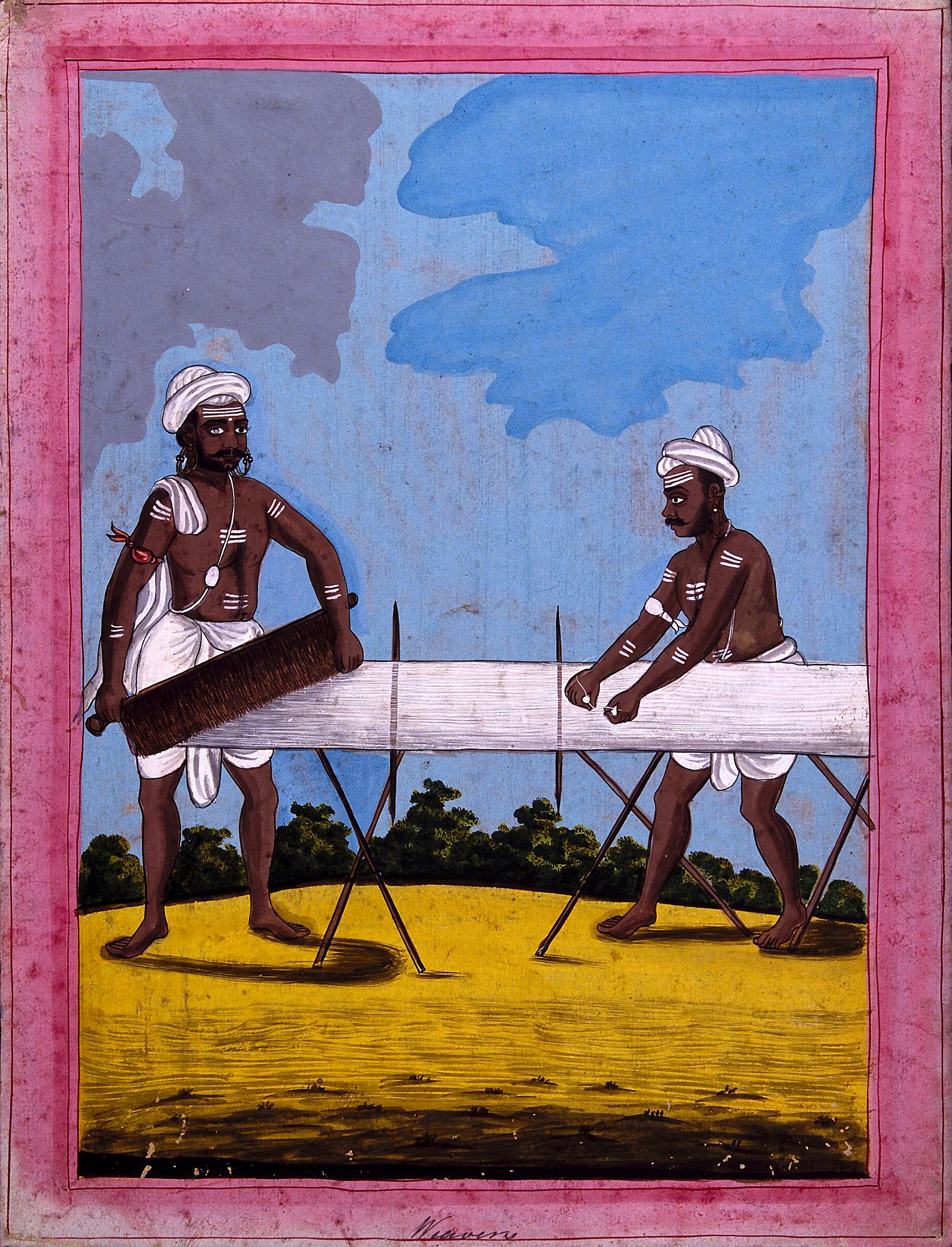
Indian weavers, Gouache drawing, attributed to a painter from Tanjore (Thanjavur), ca. 1840. Wellcome Collection, https://wellcomecollection.org/works/g7jgv3e2
After spinning the thread, the yarn is prepared for weaving by warping it. Here two Indian artisans are depicting warping the yarn lengthwise on a warp beam using a kind of comb.
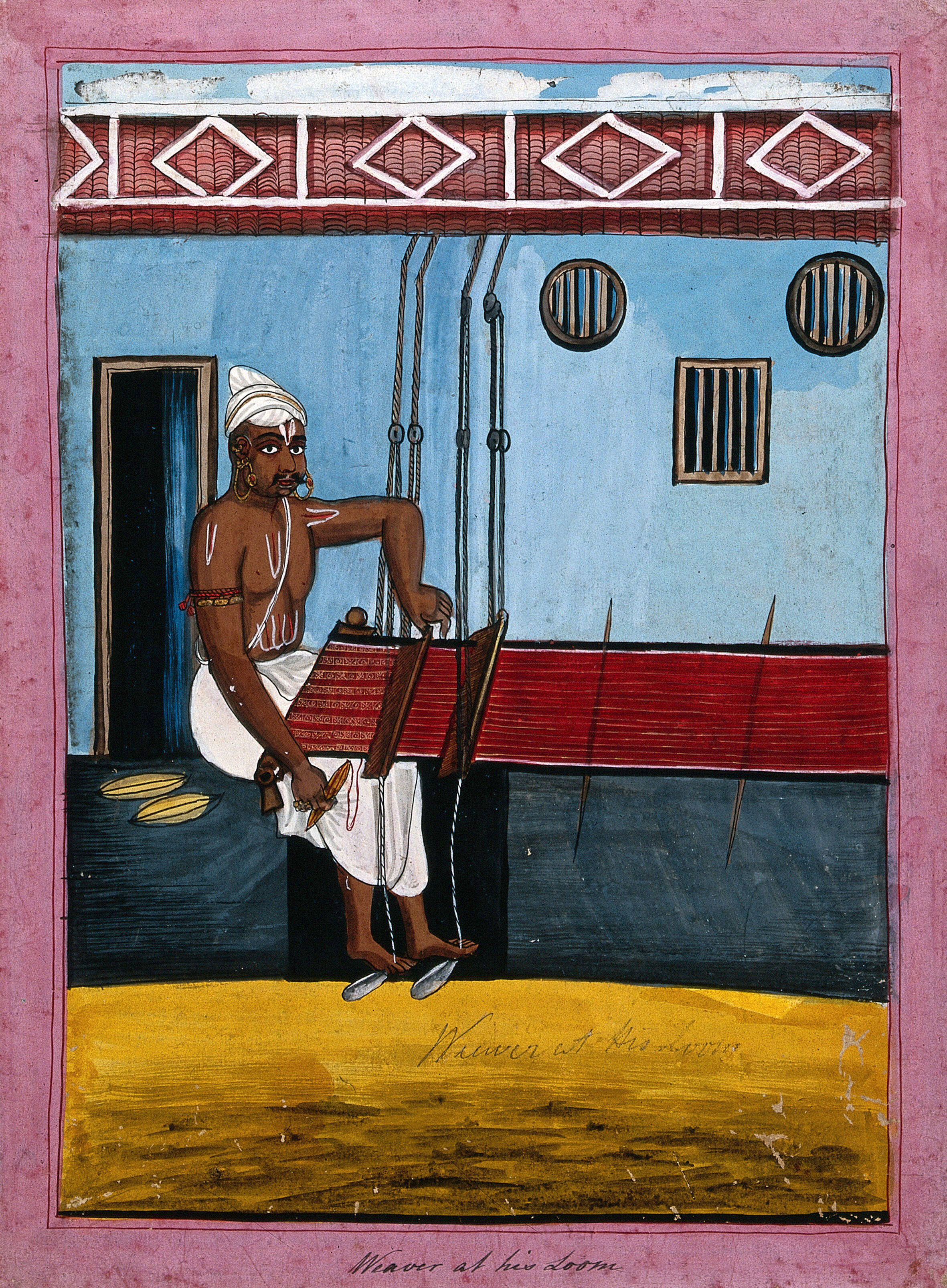
Indian weaver at his loom, Gouache drawing, attributed to a painter from Tanjore (Thanjavur), ca. 1840. Wellcome Collection, https://wellcomecollection.org/works/pjnujb7j
After spinning cotton into yarn, at least two sets of yarn are woven together to make a fabric. In short, this is done by repeatedly interlacing length way threads (the warp) with cross way threads (the weft). Weaving is done on a special frame called a loom. In this drawing an Indian weaver using a typical pit loom is depicted. The weaver sits it a pit and uses pedals that control the loom that is at ground level. Using this technique is considered to promote retention of the character of the fabric and thus improve breathability.
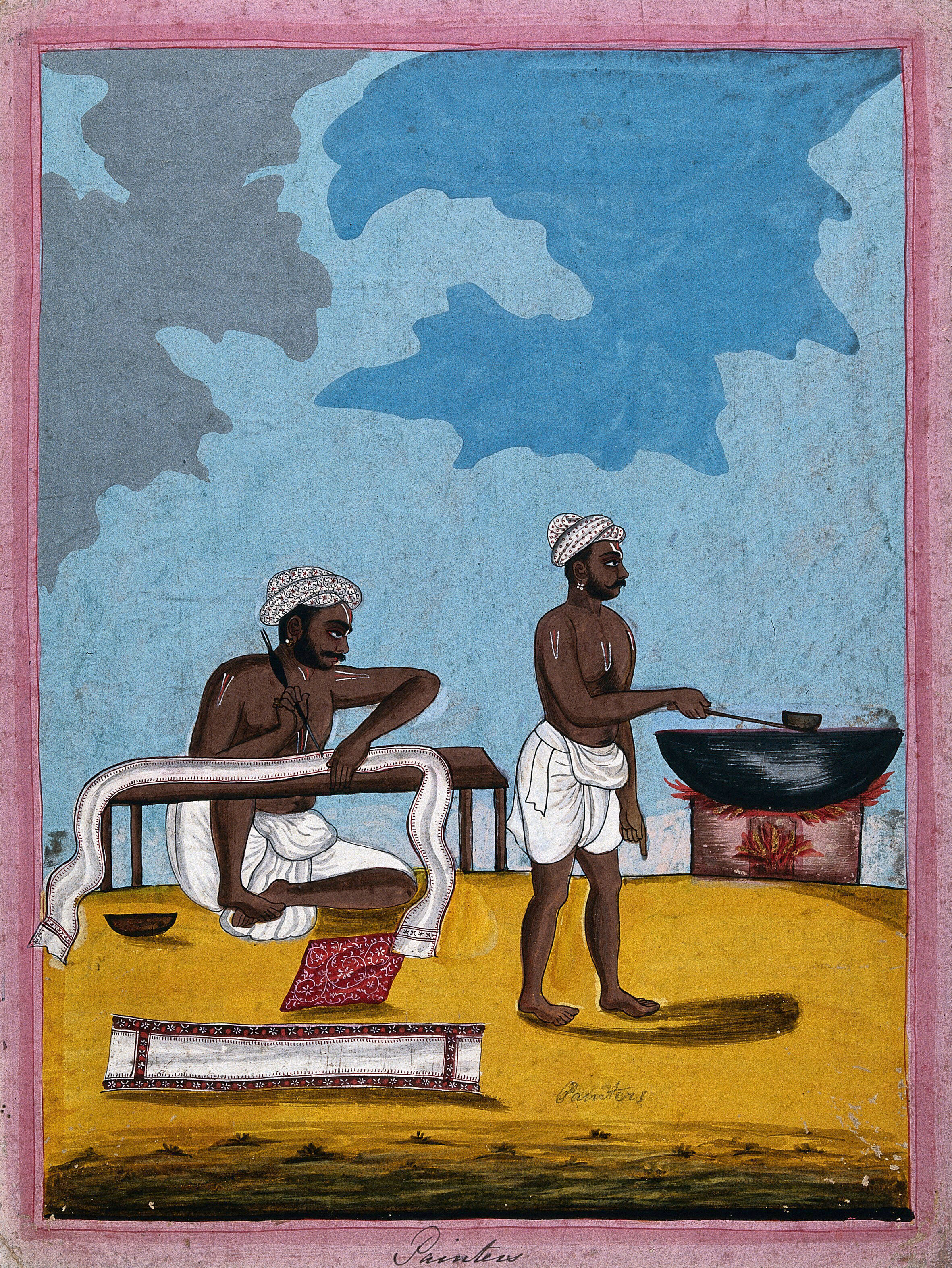
Indian cloth painters, gouache drawing, attributed to a painter from Tanjore (Thanjavur), ca. 1840. Wellcome Collection, https://wellcomecollection.org/works/d97asc47
After the cloth was woven, it could either be sold plain or dyed or painted. Colouring cotton was also a complex process and this was one of the areas in which the Indian textile industry excelled in this period. Different techniques were used depending on the desired outcome. On this image two painters are depicted using a pen to transfer the hot dye to a piece of cloth, making intricate decorative patterns along the borders of the cloth.
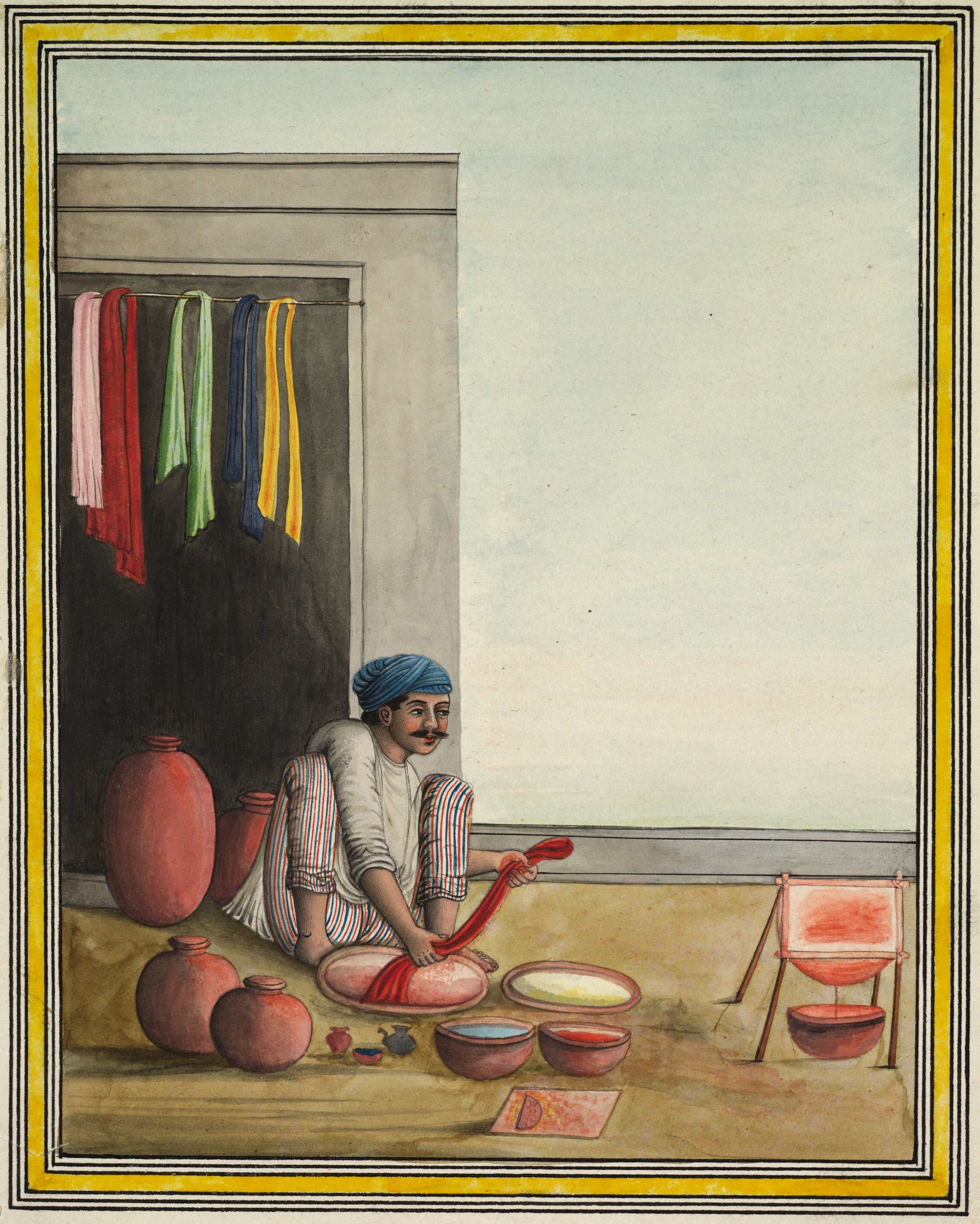
Man Dyeing Cloth, Company School, Lucknow India, early 1830s, The Cleveland Museum of Art, Cleveland OH, https://www.clevelandart.org/art/1992.142
Dipping whole pieces of cloth into a colourant was another dyeing technique. This painting depicts an Indian dyer sitting on the ground soaking a long piece of cloth in a red dye.
Pearls & Elephants
Apart from manufactured goods, South Asians also used many other technologies to exploit the natural environment. Here two industries are highlighted: pearl hunting and elephant catching.
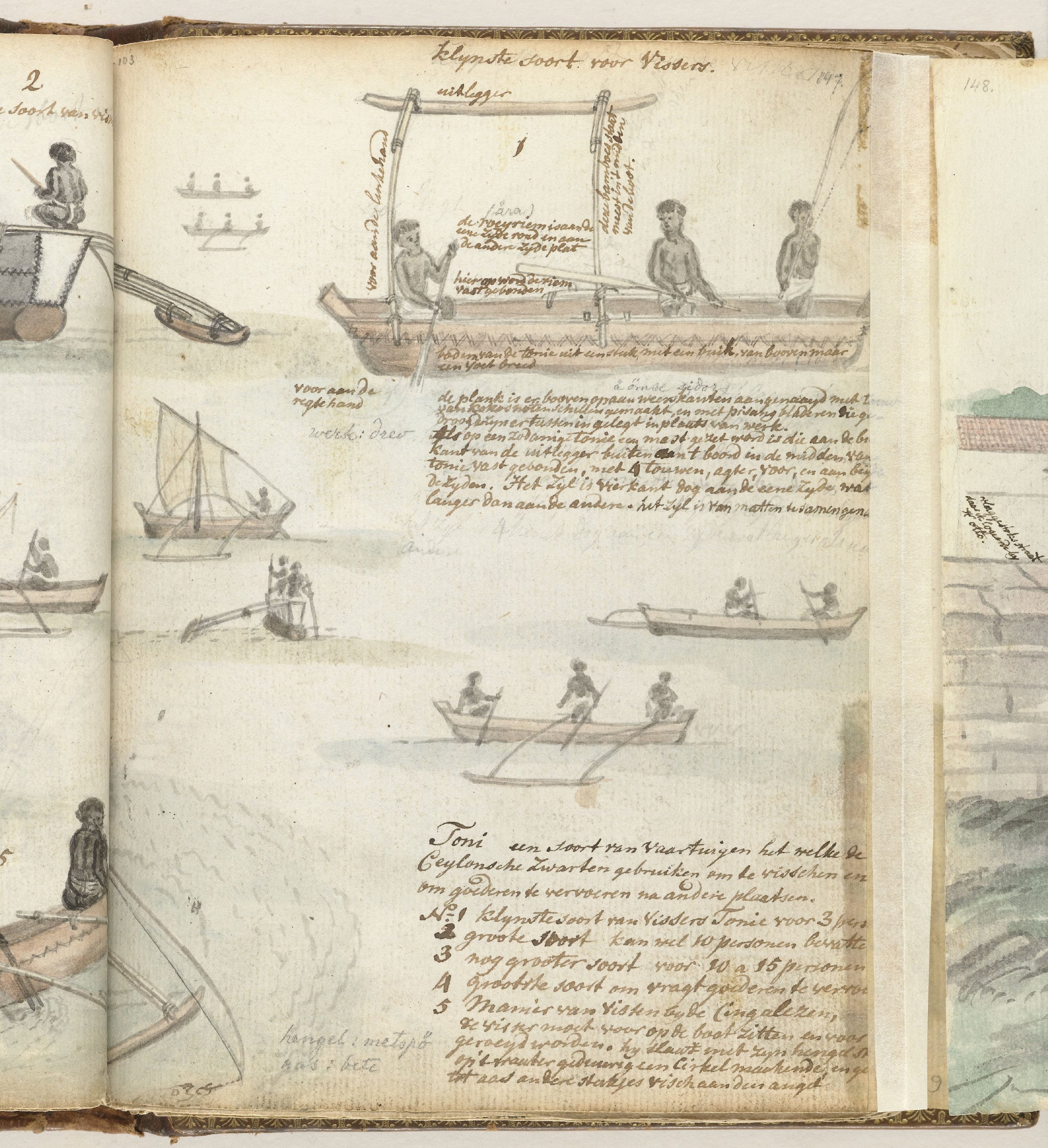
Thonies, vissersboten in de baai van Galle, watercolor, Jan Brandes, 20 January 1786. Rijksmuseum Amsterdam, http://hdl.handle.net/10934/RM0001.COLLECT.214490
This drawing depicts the different boats used around the Bay of Galle, Sri Lanka. In the top right a small ‘Toni’ boat is depicted and described. The boat includes a support float. This increased the stability of the vessel. This type of vessel was used for fishing and also pearl diving. In the Golf of Mannar, between India and Sri Lanka, divers used these boats to sail to the oyster banks where they collected oysters from the ocean floor hoping that they would contain pearls. Pearls were, and are, highly valued as gemstones.
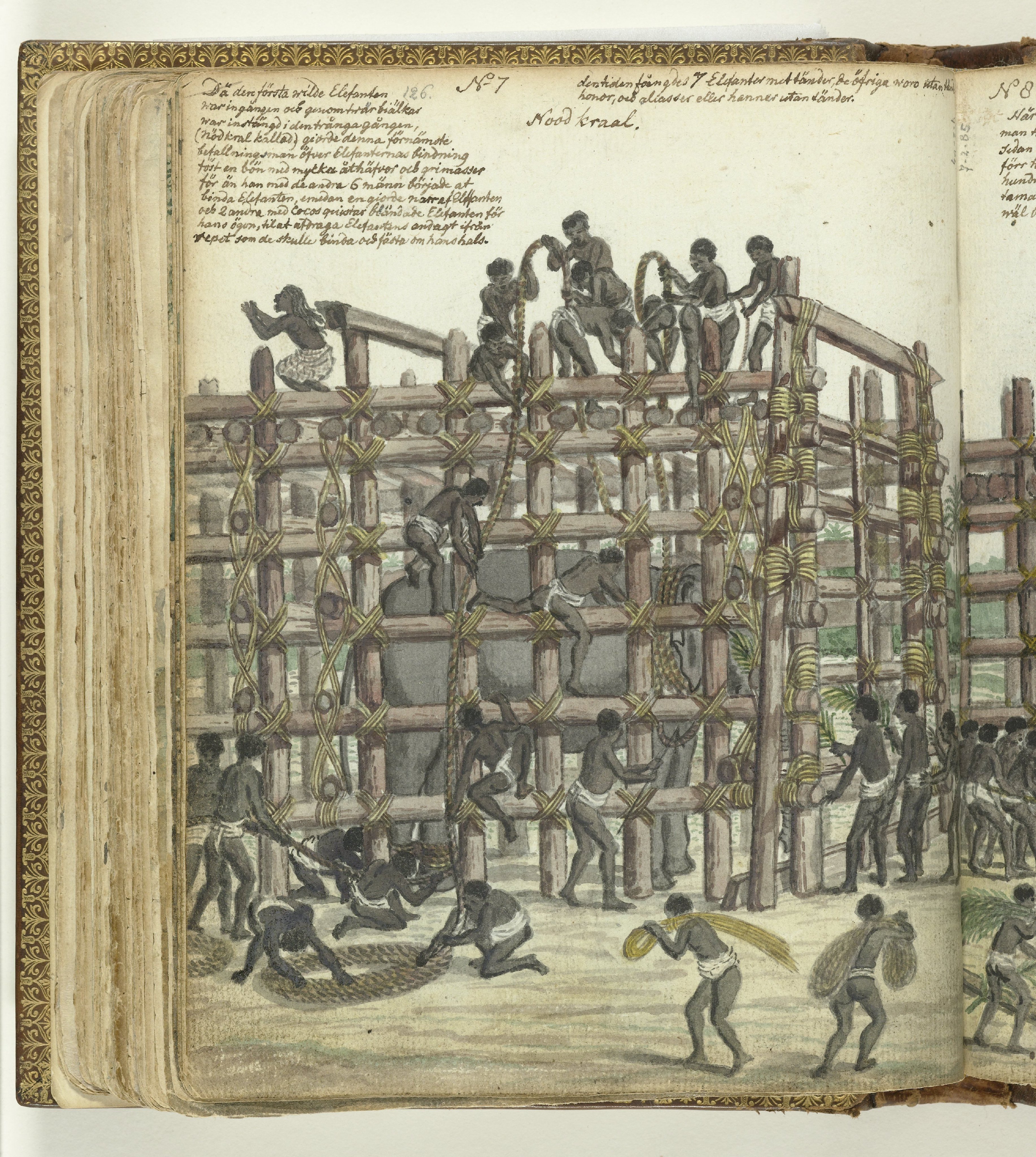
Restraining a Wild Elephant, Jan Brandes, December 1785. Rijksmuseum Amsterdam, http://hdl.handle.net/10934/RM0001.COLLECT.205289
In South and South-East Asia, wild elephants were captured and trained to be used as working animals or war elephants, or used in ceremonial settings by priests or royalty. To complete this dangerous and difficult task various techniques were employed. This drawing depicts the capture of an elephant using a large wooden structure. After luring an elephant into the cage, the animal was tied up while being distracted.